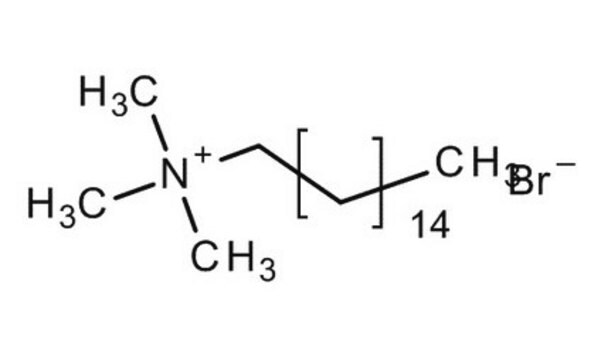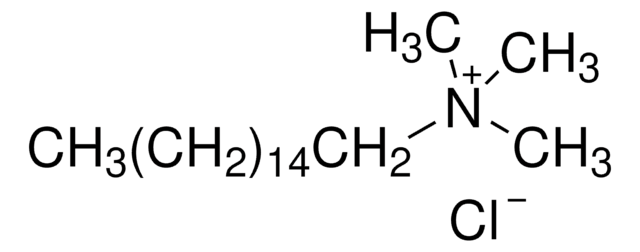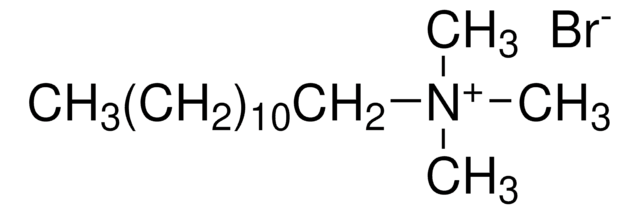ARK2188
Hexadecyltrimethylammonium bromide
USP/NF
Pharma Manufacturing
Synonym(s):
CTAB, Cetrimonium bromide, Cetyltrimethylammonium bromide, Palmityltrimethylammonium bromide
About This Item
Recommended Products
Agency
USP/NF
Quality Level
form
powder
pH
5.0-7 (25 °C, 36.4 g/L)
mp
248-251 °C (lit.)
solubility
H2O: soluble 36.4 g/L at 20 °C (completely)
storage temp.
2-25°C
SMILES string
[Br-].CCCCCCCCCCCCCCCC[N+](C)(C)C
InChI
1S/C19H42N.BrH/c1-5-6-7-8-9-10-11-12-13-14-15-16-17-18-19-20(2,3)4;/h5-19H2,1-4H3;1H/q+1;/p-1
InChI key
LZZYPRNAOMGNLH-UHFFFAOYSA-M
Looking for similar products? Visit Product Comparison Guide
General description
Signal Word
Danger
Hazard Statements
Precautionary Statements
Hazard Classifications
Acute Tox. 4 Oral - Aquatic Acute 1 - Aquatic Chronic 1 - Eye Dam. 1 - Skin Irrit. 2 - STOT RE 2 Oral - STOT SE 3
Target Organs
Gastrointestinal tract, Respiratory system
Storage Class Code
11 - Combustible Solids
WGK
WGK 3
Flash Point(F)
471.2 °F - closed cup
Flash Point(C)
244 °C - closed cup
Choose from one of the most recent versions:
Certificates of Analysis (COA)
Sorry, we don't have COAs for this product available online at this time.
If you need assistance, please contact Customer Support.
Already Own This Product?
Find documentation for the products that you have recently purchased in the Document Library.
Customers Also Viewed
Our team of scientists has experience in all areas of research including Life Science, Material Science, Chemical Synthesis, Chromatography, Analytical and many others.
Contact Technical Service












